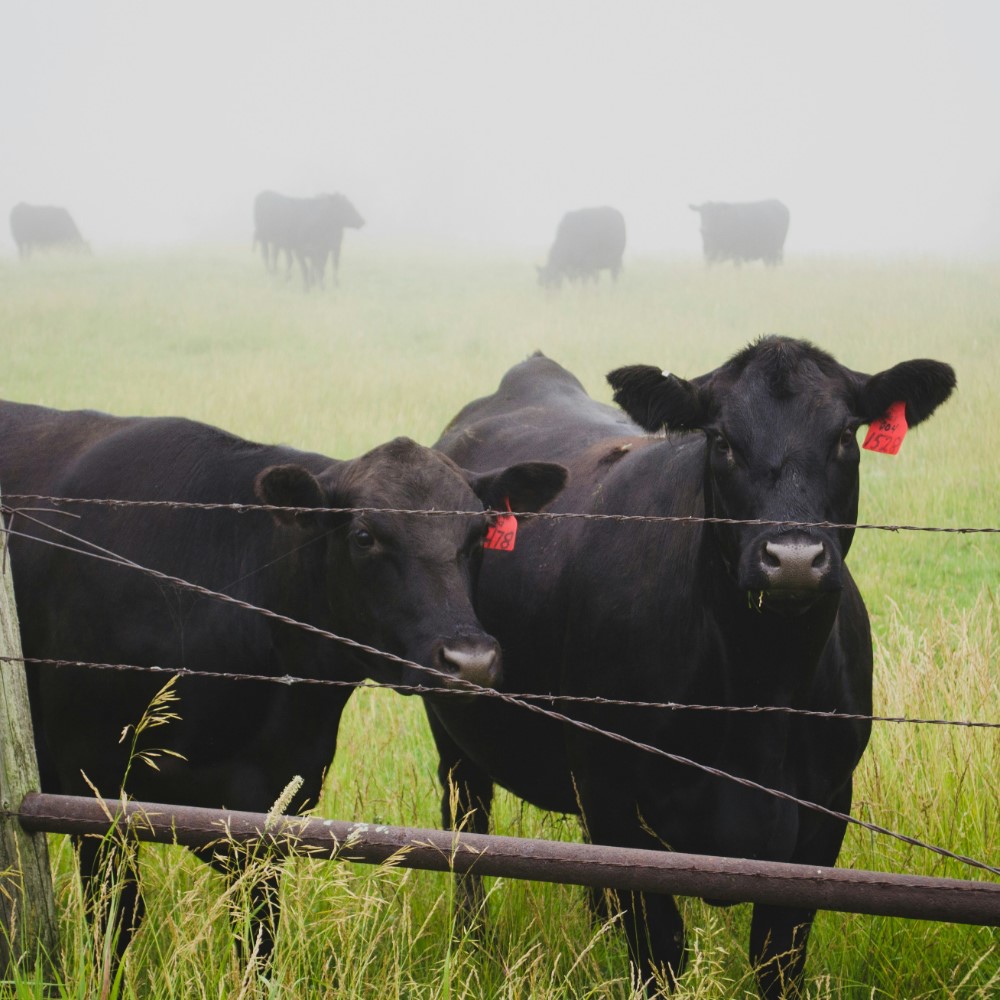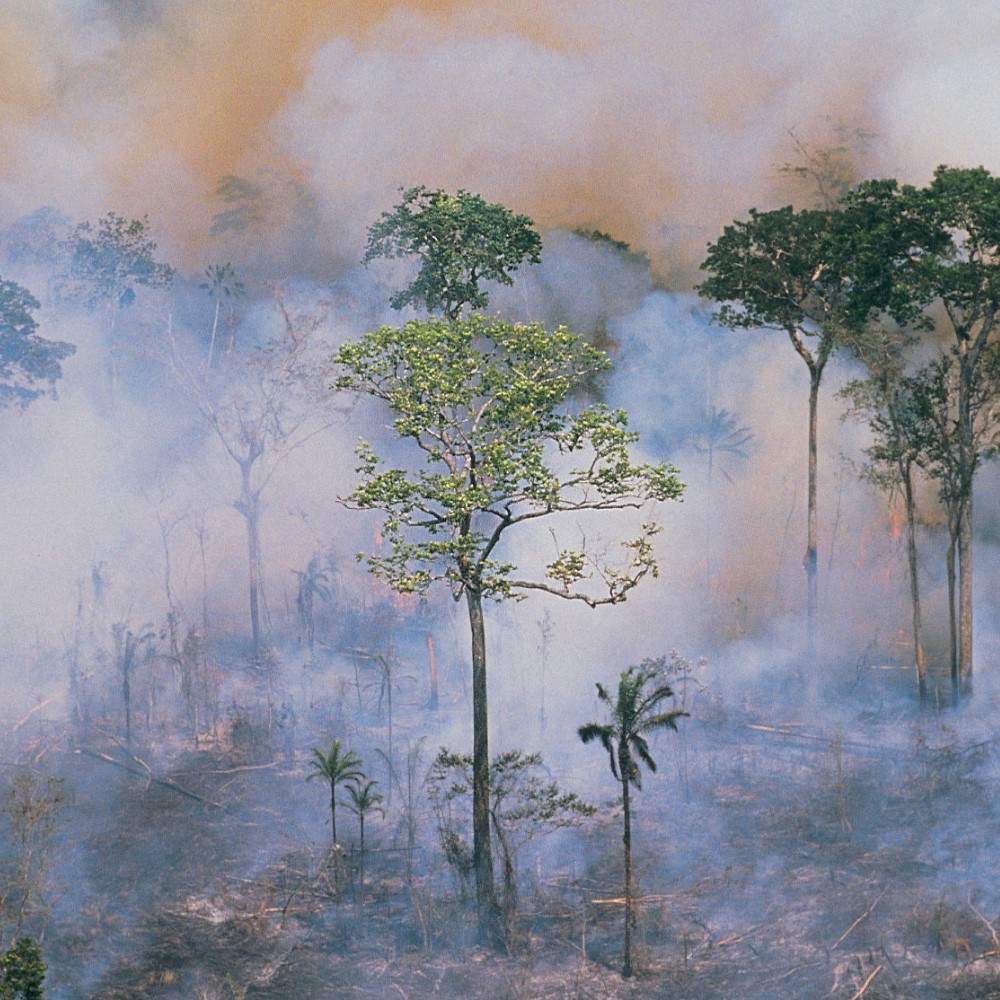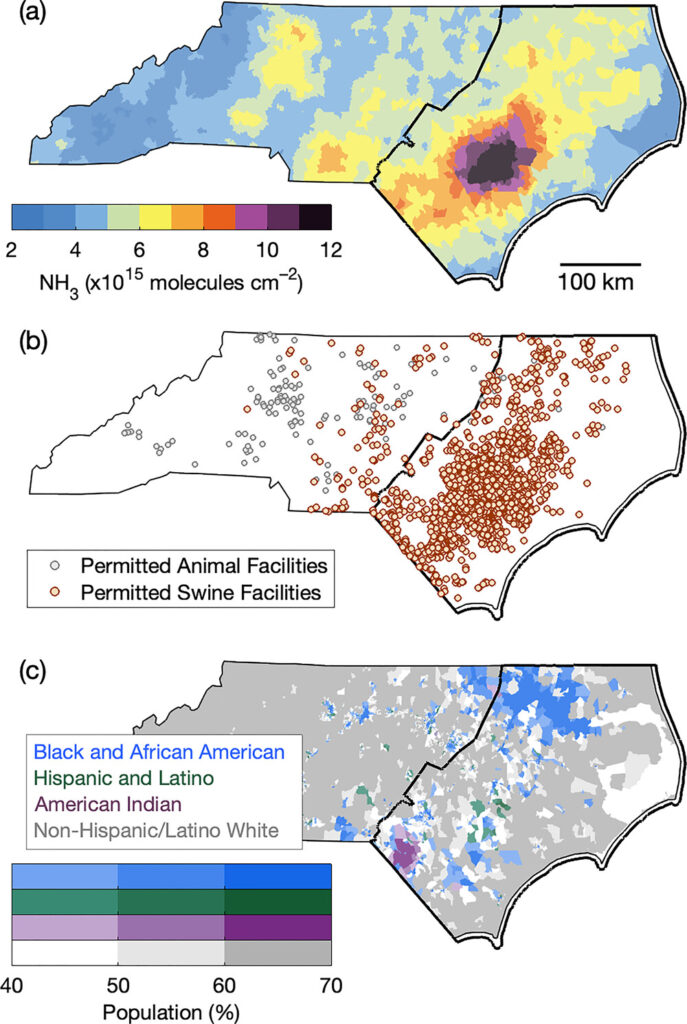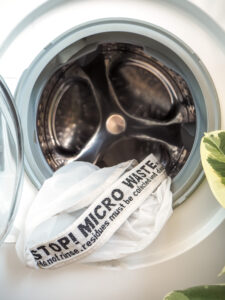
Consider this: Food production globally generates over 17 million metric tons of CO2-equivalent greenhouse gas emissions annually, with more than half of that coming from animal-based foods like beef.1 To put that in perspective, the entire global transportation sector—cars, planes, trucks, ships, and trains combined—accounts for just 16-20% of total greenhouse gas emissions.2 This means the meat industry and food production have a bigger environmental footprint than all forms of transportation combined.
So, why does this matter? The way we eat has the power to either accelerate climate change or help slow it down. In this article, we’ll explore the environmental footprint of our food system, break down how different dietary choices stack up, and look at practical ways to make meals more sustainable without sacrificing flavor or satisfaction.
How Meat Consumption Affects the Climate
Let’s talk about how eating meat—especially beef—has a much more significant impact on the environment than most realize. Regarding greenhouse gas emissions, livestock, particularly cattle, are heavy contributors. But what is going on in the process, making such a huge environmental footprint?
Greenhouse Gas Emissions from Livestock
Carbon dioxide (CO₂) tends to steal the spotlight when we think of greenhouse gases. But when it comes to meat production, the focus shifts to other gases that have a far more potent effect on the climate. One of these is methane, a gas released during digestion (specifically in ruminant animals like cows) and manure decomposition. And this is where things get alarming.
Explanation of Methane
Methane is a gas that forms when organic material breaks down in low-oxygen environments, like a cow’s stomach or manure pits. As cows digest their food, microbes in their stomachs break it down and release methane as a byproduct. Unfortunately, cows have to “burp” this methane out, and those burps add up.
Why Methane is a Potent Greenhouse Gas
Methane is far more effective at trapping heat in the atmosphere than CO₂. In fact, methane is around 25 times more powerful than CO₂ at warming the planet over a 100-year period. So, even though methane has a shorter atmospheric lifespan, its immediate impact is massive. That means every burp from a cow contributes significantly to global warming, making livestock farming a climate concern that we can’t ignore.
Methane vs. CO₂: A Comparison in Global Warming Potential
Now, you might be wondering: How does this stack up against CO₂ emissions from driving a car or burning fossil fuels? Simply put, while CO₂ is the most common greenhouse gas, methane is far more dangerous in the short term. Over a 20-year period, methane is 84 times more potent than CO₂ in warming the planet. This means that cutting methane emissions is crucial for mitigating climate change in the immediate future.
The Role of Nitrous Oxide from Manure and Fertilizers
It’s not just methane that’s a problem in livestock farming. Nitrous oxide (N₂O) also plays a big part. This gas is released from animal manure and synthetic fertilizers used to grow feed crops. Nitrous oxide has a global warming potential nearly 300 times that of CO₂, which makes it a major player in the climate impact of meat production. It’s one of those sneaky gases that often flies under the radar, but it’s definitely part of the equation regarding the carbon footprint of meat.
Deforestation and Land Use for Meat Production
When we think about deforestation, we often picture massive clearings of trees to make way for sprawling urban developments or timber production. But there’s another culprit in this story: meat production. As the demand for meat increases, so does the need for more grazing land and crops to feed the livestock. And where do we turn? Often, it’s the world’s precious forests.
The Amazon Rainforest: A Case Study of Deforestation Driven by Meat Production

In particular, the Amazon rainforest—often called the “lungs of the Earth”—has been a major target. Large swaths of this critical ecosystem have been cleared for cattle ranching. In fact, around 80% of deforestation in the Amazon is linked to livestock farming.3 That’s a whole lot of precious greenery being cut down just so cows can have more room to roam or, more likely, so we can grow crops like soy and corn to feed those cows.
But it’s not just about the land—this process also impacts biodiversity and the climate—forests like the Amazon store carbon as a natural buffer against climate change. When trees are chopped down, not only are we losing a carbon sink, but the carbon stored in those trees gets released back into the atmosphere, contributing to greenhouse gases. And it’s not just the carbon. The Amazon is home to countless species of animals and plants, many of which are found nowhere else on Earth. By clearing this land for livestock, we’re putting innumerable species at risk and threatening entire ecosystems.
So, what’s the solution? It starts with recognizing that the more land we dedicate to animal agriculture, the more we harm the environment in ways we might not even realize. By shifting toward more sustainable practices in how we grow our food and rethink our meat consumption, we can protect forests, preserve biodiversity, and reduce our carbon footprint.
Water and Resource Consumption
Let’s take a minute to discuss a resource we really can’t afford to waste: water. While we’re all familiar with the importance of conserving water for things like showers or dishwashing, we might not realize how much water goes into producing the food we eat—especially meat.
The Water Footprint of Meat vs. Plant-Based Foods
To put it simply, the water footprint of meat is huge. Consider this: producing just one pound of beef takes roughly 1,800 gallons of water.4 That’s not just the water the cows drink (though they need a lot of that), but the water required to grow their food, process them, and transport the final product. In comparison, plant-based foods are far less water-intensive. For example, developing a pound of lentils uses only about 50 gallons of water. That’s a major difference!
The Land Impact of Meat Production
But it’s not just water. The amount of land and energy used in meat production is also staggering. Raising cattle, for instance, requires vast amounts of land for grazing and growing feed crops like soy and corn. When you think about all the land needed to feed one cow, it’s easy to see why meat production takes up so much space. In fact, livestock farming uses about 80% of global agricultural land5, yet it provides only 18% of our calories. That’s a whole lot of land for relatively little return.
Now, let’s talk energy. Meat production—especially on an industrial scale—requires a lot of energy to power everything from the farms to the processing plants and transportation networks. This energy often comes from fossil fuels, adding another layer of environmental impact.
Factory Farming and Pollution: The Hidden Costs of Industrial Meat Production
When we think about factory farming, it’s easy to picture rows of animals in confined spaces, but the environmental toll is just as staggering. Large-scale livestock operations are not only a factory for meat but also a pollution powerhouse, releasing more than just methane into the air.
Air Pollution: These factory farms emit disturbing pollutants into the atmosphere, from ammonia to particulate matter, all contributing to poor air quality. A study published in Environmental Science & Technology found that ammonia levels, a typical pollutant factory farms produce from animal manure, can be observed from space.6 Even more concerning, this air pollution disproportionately affects communities of color, compounding environmental justice issues. It’s like your backyard barbecue—if the backyard is hundreds of miles wide.

Water Pollution: It’s not just the air that suffers—factory farms are notorious for polluting our water systems. Farm waste runoff seeps into rivers and lakes, carrying harmful nutrients and bacteria. This runoff dramatically contributes to creating “dead zones” in oceans and freshwater bodies, where marine life struggles to survive due to oxygen-deprived water. These zones are essentially lifeless patches, and their spread results from the excess waste from factory farms. This may seem distant, but it’s a vicious cycle affecting not only our ecosystems’ health but our global food chain.
Health Risks and Antibiotic Resistance: Factory farms are breeding grounds for another health concern—antibiotic resistance. Research indicates that the long-term and massive use of antibiotics in farmed animals contributes to the prevalence of bacterial antibiotic resistance in humans. For instance, an increase of 1,000 tons of antibiotic use in factory farming globally could potentially increase antibiotic resistance in humans by 21%.8 This means that the medications we rely on to treat human infections might not work, posing a serious public health threat. So, while the animals might be fed antibiotics, our future health could bear the cost.
The reality is that factory farming doesn’t just affect the animals—it’s a ripple effect that reaches far and wide, from the air we breathe to the food we eat to the health risks we face. Reducing its environmental footprint isn’t just a “nice-to-have” change—it’s essential for the planet and our future.
Sustainable Solutions and Alternatives: Reducing Meat Consumption—What Individuals Can Do
When it comes to reducing our environmental footprint, one of the most powerful actions we can take is rethinking our relationship with meat. It’s not about giving up your favorite burger or chicken wings forever (unless you want to, of course!)—it’s about making small, meaningful changes that add up over time.
The Benefits of Plant-Based Diets and Flexitarian Eating
Adopting a plant-based diet isn’t just great for your health—it’s also a win for the planet. Plant-based foods require significantly fewer resources than meat production, using less land, water, and energy. Plus, fewer greenhouse gases are emitted. But let’s not make this an “all or nothing” situation. Enter the flexitarian approach! This means you don’t have to commit to a strict plant-based diet but focus on reducing meat consumption, allowing more room for plant-based options. It’s all about balance, and the benefits are pretty clear—lower carbon footprints, better resource management, and even some health perks.
The Climate Impact of Reducing Meat, Even Slightly
You don’t have to go fully vegan to make a real impact. Even small reductions in meat consumption can drastically lower your carbon footprint. A study published in Nature showed that replacing just 20% of global beef consumption with a meat substitute over the next 30 years could reduce deforestation by half, significantly cutting the carbon and methane emissions associated with livestock farming.
Specifically, cutting down on beef—or swapping it for alternatives like microbial protein—would lower methane, a far more potent greenhouse gas than carbon dioxide, and mitigate the climate impact of deforestation. This means that even modest changes, like swapping one beef meal for a plant-based one each week, could make a substantial difference in the long term: the more people who take these small steps, the more significant the collective impact.
Small Changes That Make a Big Difference
Sometimes, it’s the little things that pack the biggest punch. Take Meatless Mondays, for example. It’s an easy way to cut back on meat and doesn’t require a complete diet overhaul. Plus, there are so many delicious plant-based recipes to explore that you might not miss the meat. If that’s too much of a commitment, try tweaking your portions.
Cutting back on the size of your meat servings can reduce consumption without leaving you hungry for more. And don’t forget about swapping in plant proteins—think beans, lentils, tofu, or even those nifty meat alternatives that are becoming more accessible and tastier than ever. These small changes are the building blocks of a more sustainable lifestyle.
This Was About Meat Consumption and Climate Change
Meat consumption substantially impacts climate change, from deforestation to greenhouse gas emissions and resource depletion. The choices we make with our food can affect the planet in ways we might not always consider.
But here’s the encouraging part: we have the power to make a difference. Every meal allows us to make choices that help reduce our environmental footprint. Whether it’s cutting back on meat, opting for sustainably sourced options, or embracing plant-based meals, every small change counts.
References
- Bouwman, H., & O’Rourke, S. M. (2021). Plastic waste and microplastics in the environment: An introduction to the special issue. Nature Sustainability, 4(7), 587-589. Retrieved from https://www.nature.com/articles/s43016-021-00358-x ↩︎
- Ritchie, H., & Roser, M. (2020). CO2 emissions from transport. Our World in Data. Retrieved from https://ourworldindata.org/co2-emissions-from-transport ↩︎
- World Wide Fund for Nature. (n.d.). Unsustainable cattle ranching. WWF. Retrieved from https://wwf.panda.org/discover/knowledge_hub/where_we_work/amazon/amazon_threats/unsustainable_cattle_ranching ↩︎
- Water Calculator. (n.d.). Water footprint of beef from industrial pasture. Retrieved from https://watercalculator.org/footprint/water-footprint-beef-industrial-pasture/ ↩︎
- Ritchie, H., & Roser, M. (2020). Global land for agriculture. Our World in Data. Retrieved from https://ourworldindata.org/global-land-for-agriculture ↩︎
- Bess, A. M., & Wooten, J. E. (2015). Plastic pollution in the environment: A new approach for understanding the global distribution of plastics and their potential impacts on wildlife. Environmental Science & Technology, 49(5), 3129–3135. https://doi.org/10.1021/acs.est.4c11922 ↩︎
- Epps, A., Dressel, I. M., Guo, X., Odanibe, M., Fields, K. P., Carlton, A. M. G., Sun, K., & Pusede, S. E. (2025). Satellite observations of atmospheric ammonia inequalities associated with industrialized swine facilities in Eastern North Carolina. Environmental Science & Technology, 59(5), 2651-2664. Retrieved from https://doi.org/10.1021/acs.est.4c11922 ↩︎
- Bento, J., & Nogueira, S. (2023). Emerging issues in plastic waste management and environmental impacts. In M. L. C. M. de Almeida & L. A. S. Moreira (Eds.), Sustainable development goals: A global agenda for the future (pp. 659-674). Springer. https://doi.org/10.1007/978-3-031-65168-7_52 ↩︎





